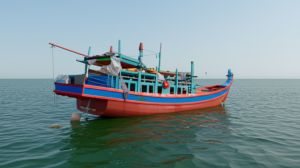The user wants a detailed analysis and professional report based on the title “Bersatu Youth backs Petronas amid Sarawak’s Miri terminal dispute, cites Petroleum Development Act”.
The report needs to be over 1000 words, in simplified Chinese, with a specific structure (engaging intro, titled sections, strong conclusion).
The language should be accessible, creative, and avoid jargon.
It must incorporate factual information from the search results.
No English titles, no greetings, no source list at the end.
Plan:
* Introduction: Hook the reader, introduce the core conflict (Sarawak vs. Petronas over Miri terminal) and Bersatu Youth’s intervention.
* Section 1: 争端缘起:美里码头上的波澜 (Origin of the Dispute: Waves on the Miri Terminal): Detail the background of the dispute, Sarawak’s claims, and Petronas’s role.
* Section 2: 石油开发法:法律的基石 (Petroleum Development Act: The Cornerstone of Law): Explain the significance of the Petroleum Development Act 1974 and how it applies to this situation according to Petronas and potentially Bersatu Youth.
* Section 3: 青年之声:土团党青年的立场 (Voice of the Youth: Bersatu Youth’s Position): Elaborate on Bersatu Youth’s statement, why they support Petronas, and how they interpret the legal framework.
* Section 4: 各方博弈与深层影响 (Interactions of Parties and Deep Impacts): Discuss the implications of this dispute on federal-state relations, the oil and gas industry, and the political landscape. Analyze the motivations behind different parties’ actions.
* Conclusion: 未来展望:和解还是持续? (Future Outlook: Reconciliation or Continuation?): Summarize the key points, reflect on the potential outcomes, and leave the reader with a thought-provoking ending.




